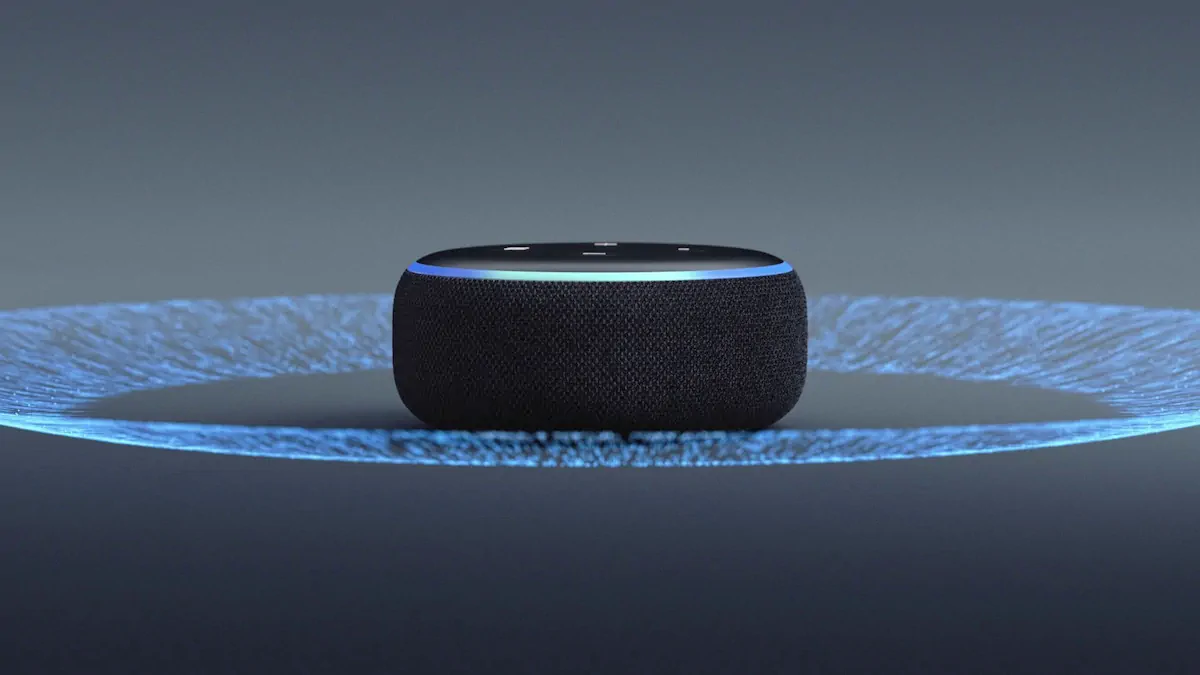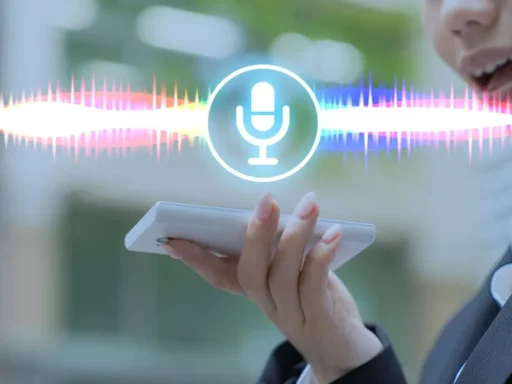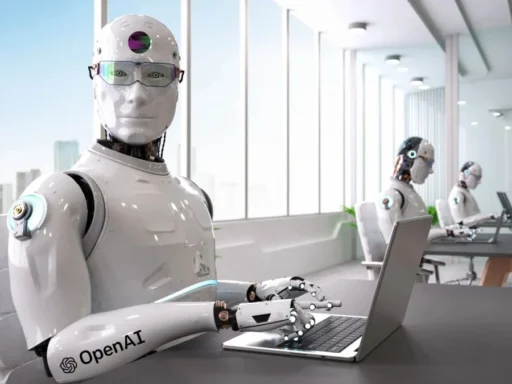Why do I still repeat myself to Siri like I’m talking to a wall? Why can’t Alexa figure out I’m asking about my calendar, not the weather in Canada? We were sold the future. AI-powered voice assistants that would anticipate needs, hold conversations, and remove friction from our day-to-day lives. But here we are, a decade in, still whispering the same commands like we’re powering up an old VCR.
It wasn’t supposed to be like this. Back in 2011, Steve Jobs introduced Siri as a “humble personal assistant,” but one poised to grow into something bigger. Amazon wasn’t far behind with Alexa, turning Echo devices into household staples. Then came the bold pledges—AI that learns, anticipates, helps. Except it never got there. That frustration you feel isn’t just you. It’s a symptom of an entire industry stretching promises far beyond deliverables, hiding behind sleek keynotes and choreographed demos while dodging the hard questions. What happened?
Let’s crack this open.
The Hype Cycle Of AI: Apple And Amazon’s Grand Pledges
In the beginning, Apple’s pitch was elegant: intelligent, intuitive technology designed to fit seamlessly into your life. Siri was the flagship of this ambition—a voice-controlled assistant built into every iPhone. Amazon went noisier, literally. Alexa blared from Echo speakers, controlling lights and playing trivia, promising a smart home where your words alone pulled all the strings.
The AI revolution wasn’t just coming—it was apparently already here. Tech conferences, investor calls, and glossy ads all echoed one thing: this isn’t just software, it’s evolution. Apple’s 2023 WWDC keynote teased us with “on-device intelligence” that would learn contextually, while Amazon kept promising “conversational AI” leaps for Alexa. In internal memos reviewed by employees and obtained via leaked Slack screenshots (TechLeaks, 2023), Apple insiders referred to Siri’s development state as “limping middleware with branding gloss.”
Meanwhile, AI’s broader progress had us dreaming: GPT-4 was writing code, Midjourney crafted surreal art, and AI copilots were building software in real-time. So why are Siri and Alexa still stuck on stupid?
Unfiltered Reality: Why Revolutionary AI Remains A Mirage
Let’s bring this back to the ground. The reason your voice assistant hasn’t evolved into the digital butler you were promised boils down to three truths:
- Voice-based AI isn’t learning as fast as we thought.
- The “we care about your privacy” narrative comes with massive trade-offs.
- These systems weren’t built for nuance. They were built to sell devices.
Apple touts privacy-forward design. It’s a stance that limits how much data Siri can actually process to improve. No cloud-scale neural net. No deep context modeling. Just siloed machine learning stuck on your iPhone. Amazon, on the flip side, hoards user data through Alexa, but the result? Shallow automation—reminders, timers, weather—nothing that passes a Turing chuckle test.
Pull open the curtain and it’s all patchwork. An internal Apple development doc leaked in 2022 noted that over 85% of Siri responses are hard-coded tree choices masquerading as real intelligence. Alexa’s backend isn’t much better. Developer forums tied to Amazon’s Skills API reveal that over 60% of user requests in 2023 ran through fallback scripts instead of NLP-based interpretation.
Here’s a simple table to outline just how far the AI marketing has drifted from the actual product experience:
| Company | Marketing Claim | Actual Capability |
|---|---|---|
| Apple (Siri) | “Next-gen smart assistant with contextual awareness” | Basic command recognition with no memory or context |
| Amazon (Alexa) | “Conversational AI with real-time learning” | Pre-scripted responses, limited interaction depth |
The tech is not there. Or worse—it is, but it’s trapped behind business decisions and PR strategies. Siri could be smarter, Alexa could be bolder, but neither company’s incentives align with radical change. Apple sells devices, not software services. Amazon uses Alexa to push shopping and subscriptions. Better conversation isn’t on the roadmap. Consumer manipulation is.
Everyone’s branding their voice assistant as the future, but they’re designed to be obedient—not intelligent. We’re trapped in an ecosystem optimized for upsells, not uplift. Real innovation gets left on the lab table. And users keep wondering why “Set a recurring message for Mom” triggers a Wikipedia article about World War II.
Apple’s AI Aspirations: An Inside Look At Apple Research Labs
Here’s the irony—Apple has elite AI talent. Their Cupertino and Zurich labs are crawling with world-class researchers trained at Stanford, Oxford, and in some cases, ex-DeepMind teams. The Apple Machine Learning Journal has published glimpses into promising advancements—federated learning, on-device personalization, and semantic understanding frameworks.
The problem is translation from lab to product. Much of Apple’s AI research doesn’t make it into consumer devices, or if it does, it’s watered down through layers of legal, PR, and hardware constraint. Developers close to Siri’s core systems say there’s little room for experimental risk. “We have the science,” one internal Slack message reads, “but the path from algorithm to UX gets kneecapped by marketing.”
Let’s stop pretending Siri and Alexa are broken because the tech is hard. They’re broken because making them actually helpful doesn’t align with billion-dollar product margins.
The State of Apple Technology in AI Development
Walk into any Apple store and you won’t hear the word “AI” shouted from the rooftops. Yet, from the way your iPhone guesses the next word to how your Apple Watch tracks your heartbeat, machine learning is baked into the experience. More subtle than flashy, Apple’s AI development is quiet — but it’s everywhere.
Siri might not steal headlines like ChatGPT or Google Bard, but Apple’s integration of AI runs deep and purposeful. In the background, your iPhone is automatically organizing your photos with facial recognition. iPads learn your handwriting style to improve recognition with Apple Pencil. Apple Silicon itself — the M-series chips — is built with neural engines designed to enable on-device learning.
Rather than selling AI features, Apple embeds them into its hardware-software ecosystem so tightly that users understand their power, even if they don’t call it “AI.” The result? People trust the magic behind the curtain — even if they don’t know there’s a neural network operating that magic.
But how does this approach stack against the giants of generative AI like Google and Microsoft? They went all-in on chatbot integrations and public demos. Meanwhile, Apple stayed off the hype train and focused on privacy-preserving on-device learning. That’s not just a technical choice — it’s a brand statement.
Where Microsoft injects Copilot into everything from Excel to Outlook, Apple keeps their machine learning efficiently silent. Google’s DeepMind rolls out bombshell model releases every quarter, while Apple laces small AI wins into product updates. It puts Apple in a strange spot: not leading the PR race, but quietly powering billions of AI micro-moments across devices.
And strangely enough, it works. According to developers building Apple-first apps, the consistency and power of its AI frameworks — especially Core ML and Create ML — are rock solid. They’re invisible tools that provide sturdy AI blocks without locking teams into buzzword-driven development cycles.
Ultimately, Apple isn’t chasing the AI clout others seek. Instead, it shapes trends by forcing the market to recalibrate expectations. When Apple finally added satellite SOS support or personal voice mirroring features, they were late to the party — but redefined what those features meant for accessibility and reliability.
Apple’s AI development approach isn’t about being louder. It’s about being stickier — invisible, cohesive, and part of daily user routines. And that stickiness forces everyone else to rethink what AI should feel like, not just what it can do.
AI Startups and Apple’s Ecosystem
If you’re building an app today, especially in AI, chances are you’re considering where it’ll live. For many companies, launching inside the Apple ecosystem isn’t a side mission — it’s the main hustle. Why? Because Apple’s AI-friendly chip architecture, developer tools, and user base create a triad that startups don’t ignore.
Take, for example, Rewind AI — a memory helper app that quietly records and indexes your computer activity. It launched with M1 chip optimization and grew fast thanks to Apple’s local processing and privacy-centric approach. These kinds of startups don’t just build for Apple; they grow up inside its ecosystem.
And that growth isn’t accidental. Apple offers developer kits that make AI a literal drop-in feature. Machine learning features like vision-based tasks or language processing on Core ML require less overhead and zero cloud costs, which can be game-changing for lean startups.
- Integrated APIs: Startups plug directly into on-device ML models for translation, face recognition, and more.
- Privacy-first optics: Apple’s local processing narrative gives startups a natural pitch for trust-based products.
- App Store loyalty: The user base is highly monetizable — developers report higher in-app conversion rates across iOS compared to Android.
Being Apple-exclusive or Apple-first isn’t just a tech decision — it’s a way to stand out in the AI startup space. While competitors chase cloud-based scale, Apple-focused startups often boast competitive speed, energy efficiency, and ethical AI branding via on-device processing.
When it comes to partnerships, Apple rarely does open-arms collaborations. Acquisitions happen behind closed doors — think Turi, Laserlike, or Xnor.ai. These weren’t headline splashes until well after the ink dried. But the pattern is consistent: Apple buys talent and tech it believes will advance on-device intelligence while respecting user data.
That arm’s-length approach also means Apple might feel distant or closed-off to some startup founders. Yet, those who align with Apple’s privacy ethos and development constraints often find fertile ground, especially if they build lean and fast around Apple’s hardware capabilities.
In the AI race, Apple may not be nurturing a garden of third-party chatbot clones. But make no mistake — startups operating inside its walls are pushing the edge of what consumer-friendly AI looks and feels like.
Behind the Scenes: Apple’s AI Development Efforts
Crafting AI inside Apple is like developing a secret recipe behind locked kitchen doors. The public sees the final dish, but never the ingredients. That’s Apple’s thing — tight-lipped secrecy wrapped in shiny UX. But beneath those layers is a surprisingly robust AI operation with billions invested behind the scenes.
The company’s AI team has been growing steadily, especially after acquiring stealth-mode firms focused on processing-efficient models. Recent hires from Google Brain and academic ML circles suggest Apple isn’t staying passive. Their push into health tech, wearables, and automotive hints at AI being more than just background magic — it’s foundational.
Still, the closed ecosystem comes at a cost. Apple’s restriction-heavy environment can slow collaboration. Some AI researchers have left, citing limited publishing freedom and inability to share breakthroughs with the broader community. Public datasets? Shared libraries? Forget it — this isn’t the open-source party Google and Meta are throwing.
But that secrecy isn’t without benefits. When Apple builds AI, it usually works end-to-end across hardware and software. Their neural engine in M-series chips, for example, is optimized to handle billions of operations per second without draining your battery. Research touches everything — from autocorrect to crash detection.
This year, whispers from internal teams and job postings hint at heavier investment in generative AI — yes, Apple’s building its own large language models. Bloomberg reported a new framework internally dubbed “Ajax,” being tested for ChatGPT-like capabilities. Whether this goes public or stays behind Siri’s vague smile is unknown.
The biggest challenge for Apple remains its own values: how to advance AI while preserving privacy, and how to innovate without breaking its polished silence. There’s a growing tension between transparency and the company’s instinct for secrecy.
So far, Apple’s AI story unfolds not with blog posts or research paper drops, but with product updates whispered every September — when new features land and people say, “This just works.” Underneath that phrase lives a chaotic, expensive, and highly curated AI machine. You just aren’t allowed to peek into it yet.
Market Evolution and Apple’s AI Impact
Everyone keeps asking the same thing—Is Apple even doing anything in AI?
Let’s be real. Apple’s not out there screaming “AI AI AI” like Google or Meta. But behind the low-key branding and minimalist keynotes, they’ve been using AI to quietly reshape their market position—without shouting about it.
AI as a Catalyst for Apple Market Growth
AI doesn’t always look like a robot in your living room. Sometimes, it’s just your iPhone recognizing your face faster than you blink. Or AirPods switching between devices without you doing a thing. That’s not magic—it’s machine learning, working behind the curtain. And guess what? Those small UX moments create outsized revenue.
Apple’s AI integration has made their ecosystem “stickier.” Customers don’t just buy one product. They get hooked. The Apple Watch uses predictive modeling to detect health issues. Siri processes billions of voice queries a year. And the M series chips? They’re optimized for on-device AI. You’re not just buying aluminum and glass. You’re buying baked-in intelligence—and that translates into market domination.
How Apple Products Shape Consumer Expectations Around AI
People don’t want to learn AI. They just want it to work.
Apple leaned into this. No dashboards. No configuration screens. Just seamless use. They trained users to expect zero-learning-curve intelligence. When your iPhone knows when you’re driving or when your Airpods cut out non-human noise, that’s AI doing heavy lifting with zero noise. They made it invisible and essential at the same time.
Apple’s Role in Defining Global AI Trends
The AI race isn’t just about who shouts louder or builds the biggest models. It’s about who controls the interface between humans and algorithms.
Apple owns that interface. Worldwide. An estimated 1.5 billion users interact with Apple products daily—and the company sets default expectations for what “intelligent interaction” feels like. That’s power. Quiet, global influence. Other tech giants are racing to catch up with flashy AI demos. But Apple’s framing the rules of the game, one subtle Siri upgrade at a time.
Where is the Transformational Innovation We Were Promised?
Let’s get brutally honest—Where’s the massive leap forward? Where’s the jaw-drop AI event from Apple?
Everyone’s watching for some dramatic shift, but what we’ve seen over the last few years? Mostly safe moves. Upgrades. Better chips. Improved photo processing. Yes, Apple’s AI push is keeping the machine running. But disruption? Not quite.
The Accountability Gap: Are Tech Giants Delivering on AI Promises?
Tech companies love waving the AI banner when it’s press-friendly. But when outcomes flop or workers get burned out? Silence.
Apple loves words like “privacy-first AI” and “on-device machine learning.” Sounds good. But we don’t get transparency on how those models were trained. No FOIA trail. No documented labor impact. No emissions benchmarks for their AI compute clusters. Just polished marketing.
It’s the perfect accountability dodge—promise intelligence, deliver convenience, reveal nothing.
Spotlight on Apple: Incremental Growth vs. Revolutionary Change
There’s no denying Apple’s tech stack has gotten smarter. A15 to A17 Bionic improvements? Impressive. Photonic engine in photos? Sure. But compare that to what was promised: AI that reinvents creativity, changes how we work, solves healthcare at scale.
What we got instead: slightly better selfie segmentation and noise cancellation on calls.
Here’s what’s hard to digest—the world’s biggest company, sitting on war chests larger than most nations, hasn’t released a single large-scale AI service to rival ChatGPT, Gemini, or even Meta’s open-source gambits. Makes you wonder if they’re playing it safe for shareholders or truly out of transformative ideas.
Big Data and AI Ethics: Apple’s Approach Compared to Amazon
Apple plays the moral high ground. “We don’t need to collect as much data.” “We use AI without compromising privacy.” That sounds better than Amazon’s “collect-everything” strategy—but it complicates Apple’s AI deployability.
Let’s face it—less data often means less powerful large-language models. Apple may be banking on edge AI, but without centralized datasets, their AI reach will always be more limited than cloud-first giants like Amazon or Microsoft. Ethics without scale? Still risky.
Beyond the Hype: The Future of Apple and AI Solutions
If Apple’s not building the biggest models, what’s their next move?
They’re betting on something that might be smarter long-term—AI that sticks to where it impacts most: your body, your home, your habits. Not just data prediction, but lived intelligence.
Apple’s Vision for AI in Healthcare, AR, and IoT
Imagine this: You wear a Watch that doesn’t just track your heart rate—it predicts early-onset disease. You walk into a store, and your AR glasses surface prices in your currency, track ingredients for allergens, and suggest alternatives based on goals you set months ago. All local, all encrypted.
- Health: Using machine learning to detect irregular heart rhythms, walking steadiness, or even cognitive decline
- AR: Vision Pro opening doors to gesture-based AI interaction—think real-time correction of your workout form, or co-editing movies with friends across continents
- IoT: Take HomeKit—voice and sensor-based automation that runs your life silently in the background
Apple doesn’t want to flood your feed with AI-generated text. They want AI that fades into the furniture, works silently, and locks you tighter inside their walled garden. That’s their play.
Can Apple Drive the Next AI Renaissance? Lessons from Their Past
If history tells us anything, Apple doesn’t do “first.” They do polished. Refined. Infinitely usable. Remember the iPod? Not the first MP3. The iPhone? Not the first smartphone. But once Apple gets in deep—they dominate the experience layer.
So… maybe Apple’s holding back on purpose. Maybe they don’t want to drop a GPT-style AI until they can launch it locked and loaded into every device, privacy-protected, battery-efficient, and branded with a sleek animation that makes it look like it’s been here all along.
Call to Action: What Consumers Should Demand from Apple and Tech Giants
Right now, users aren’t demanding enough. We’re distracted by smooth software, ignoring the trade-offs under the hood.
Here’s what it’s time to ask for:
- Verification of Apple’s ethical sourcing for AI development
- Climate receipts for AI compute usage—where, when, what impact?
- Worker impact transparency—how does AI design affect labor equity?
- Open accountability: publish the training data sources for AI models, not just the buzzwords
If Apple leads on trust, they’ve got to earn it every day. Not by saying less. By proving more.
Consumers, it’s on you too—stop clapping for smoother icon animations. Start demanding clarity. The AI future isn’t coming. It’s already in your pocket.







